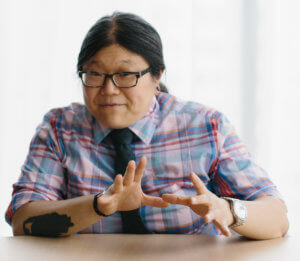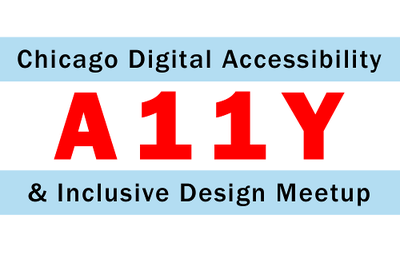 Sharlene King is a branding, product, and user experience designer focusing in accessibility and behavior.
Sharlene King is a branding, product, and user experience designer focusing in accessibility and behavior.
During business hours she works at Morningstar Inc, an independent financial research firm, building software that helps investors improve their financial health. In the after-hours and weekends, she corrupts the youth by teaching design through the Adler Planetarium, Chicago Public Schools, and other mentorship programs. You can also find her volunteering to keep Illinois and Chicago beautiful by planting trees, cleaning up parks, and forest preservation programs. She prefers food to booze, and will ask before taking the last slice of pizza.
Sharlene will be presenting “Straws and Straw Men: The Costly Argument Against Accessibility” at Accessibility Camp Chicago.
We took a few moments to ask Sharlene five questions about her involvement with accessibility.
How did you initially get involved with digital accessibility?
In 2007, the iPhone was released into the market, and I was the digital designer at a large agency working on their website. Agency websites were often loaded with Flash, large images, and convoluted navigation. There was a particular header image they wanted on their blog that was a whopping 500KB. I argued that it should be optimized at a smaller size and the art director said, “We don’t want people with slower speeds.”
“So you don’t want iPhone users,” I asked. Later, another designer there introduced the word accessibility to me; the idea that a website should be usable for everyone instead of just the amalgam guess for some mythological “target market.” Cost aside, the iPhone was a package of internet, computing, and software that anyone could have or take with them anywhere. That’s when it clicked that if you intentionally avoided exclusionary practices, you would progress in incredible ways.
Do you feel that interest in accessibility is picking up momentum? How have you seen this?
Yes. There are many different avenues of this from wanting to expand market reach, legal compliance, or just basic human decency, but it all depends on making sure products could be used by the broadest multitude of people enjoy.
What are the major challenges that you are seeing in making sites and applications accessible?
The two significant challenges are the cultural change within an organization and also refitting products.
The cultural change is difficult because there’s no definitive way to measure progress or a way to teach empathy. Many products focus on specific users and define them in fixed personas. Beyond accessibility, this narrow scope is backward and limiting.
Refitting a product is only more straightforward because you can track your progress, but it can be expensive to go backward and rebuild a product from start to finish to make sure it works for everyone. Organizations would instead focus on new business even if it means excluding others to their own detriment.
What are the examples of success that you have seen in the wild?
My favorite example is the game “A Dark Room.” The developer initially wanted it to be a game that would be narrative driven. They realized that because it was a text-based game, a lot of his users were vision-impaired and completely changed how he developed the game. The game itself is one of the richest environments I’ve played because the narrative is so strong. Often people think accessibility is a compromise, but this game proves otherwise.
What is the one thing that excites you the most about your work in accessibility?
Communication. Design is always about communicating an idea to other people. The constraints that drive design make up the challenge of success. Accessibility is one way to broaden how the communication will work.
If you haven’t already registered for Accessibility Camp Chicago, register today!
